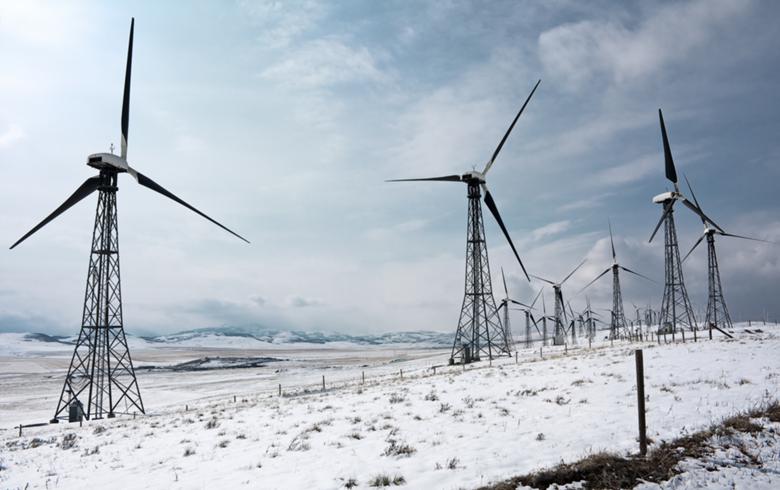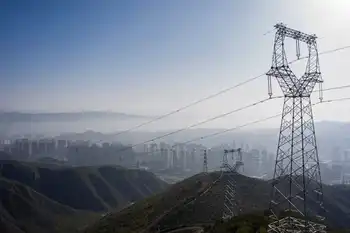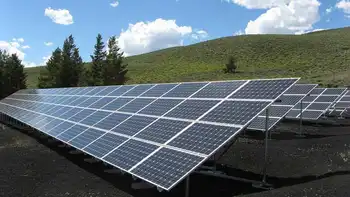Alberta Leads Canada’s Renewable Surge

NFPA 70e Training
Our customized live online or in‑person group training can be delivered to your staff at your location.

- Live Online
- 6 hours Instructor-led
- Group Training Available
Alberta Leads Canada’s Renewable Surge showcases how the province is transforming its power grid with wind, solar, and hydrogen energy projects that reduce carbon emissions, create sustainable jobs, and drive Canada’s clean electricity future.
Key Points: Alberta Leads Canada’s Renewable Surge
It is a national clean energy initiative showcasing Alberta’s leadership in renewable electricity generation, grid modernization, and sustainable economic growth.
✅ Expands solar, wind, and hydrogen projects across Alberta
✅ Reduces emissions while strengthening grid reliability
✅ Creates thousands of clean energy jobs and investments
Alberta is rapidly emerging as a national leader in clean electricity, driving Canada’s transition to a low-carbon energy future. A federal overview highlights how the province has become the powerhouse behind the country’s renewable energy growth across the Prairies, phasing out coal ahead of schedule and attracting billions in clean-energy investment.
In 2023, Alberta accounted for an astonishing 92 percent of Canada’s increase in renewable electricity generation, reflecting a renewable energy surge across the province. Solar and wind developments have expanded dramatically, as new lower-cost solar contracts are signed, reducing the province’s reliance on natural gas and cutting emissions from the power sector. Alberta’s vast land area and strong wind and solar resources have made it an ideal location for large-scale renewable projects that are transforming its energy landscape.
Federal programs are helping fuel this momentum. Through the Smart Renewables and Electrification Pathways program, 49 Alberta projects have already received over $660 million in funding, with an additional $152 million announced in the 2024 federal budget. Flagship developments include the Forty Mile Wind Farm and the Big Sky Solar Power Project, each backed by $25 million in federal support. These investments are creating jobs, strengthening grid reliability, and positioning Alberta at the forefront of Canada’s clean energy transition.
Although fossil fuels still dominate Alberta’s electricity mix, a major change is underway. In 2022, coal and natural gas accounted for 81 percent of electricity generation, while renewables and other sources contributed 18 percent, and the province’s hydroelectric capacity remained comparatively small. However, Alberta has successfully phased out coal generation ahead of the federal deadline, marking a milestone achievement in the province’s decarbonization journey.
Alberta’s renewable expansion features some of the country’s most significant projects. The Travers Solar Project in Vulcan County generates up to 465 megawatts — enough to power about 150,000 homes. Indigenous-led solar initiatives are also expanding, underscoring the province’s solar power growth, supported by $160 million in federal funding that has already created more than 1,500 jobs. On the wind side, the 494-megawatt Buffalo Plains Wind Farm, Canada’s largest onshore installation, began operating in 2024, followed by the 190-megawatt Paintearth Wind facility, which signed a 15-year power purchase agreement with Microsoft.
Beyond wind and solar, Alberta is exploring new technologies to maintain a stable, low-carbon grid while addressing solar expansion challenges related to grid integration. The province is collaborating with Saskatchewan on the development of small modular reactors (SMRs) to provide reliable baseload power and support the long-term shift toward net-zero electricity by 2050. Projects integrating carbon capture and storage are also moving forward, such as the proposed Moraine Power Generating Project — a 465-megawatt natural gas plant that is expected to create more than 700 jobs during construction.
The economic potential of Alberta’s clean energy transformation is substantial. Clean Energy Canada estimates that between 2025 and 2050, the province could gain more than 400,000 new jobs in the clean energy sector — triple the number currently employed in the upstream oil and gas industry. These positions will span renewable generation, hydrogen production, grid modernization, and energy storage.
With strong federal backing, aggressive private investment, and rapid deployment of renewable energy, Alberta is redefining its energy identity. Once known for its fossil fuel resources, the province is now positioning itself as a powerhouse for both green energy and fossil fuels in Canada, demonstrating that economic growth and environmental responsibility can go hand in hand.
Related Articles











